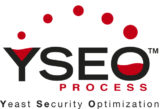In 2006, the world production of rosé wines was estimated at 21.5 million hL – 9% of the total world production of wine (Aigrain 2009). Production has been increasing for several years. In the United Kingdom, for example the main sellers are rosé wines from the United States – almost half of the total wines sold in supermarkets. From a technical point of view, the production of rosé wine involves particular considerations as rosé is mid-way between white wine (avoiding the extraction of phenolic compounds at the tannin level) and red wine (involving potential problems with colour extraction and structure). When short maceration times are used in the production of high quality rosé wines, the wines can be fragile and evolve rapidly. One of the most frequent developments is the appearance of premature lactic and creamy aromas that can override the fruity aromas in the nose and the refreshing sensation in retronasal perception.
Download PDF 
